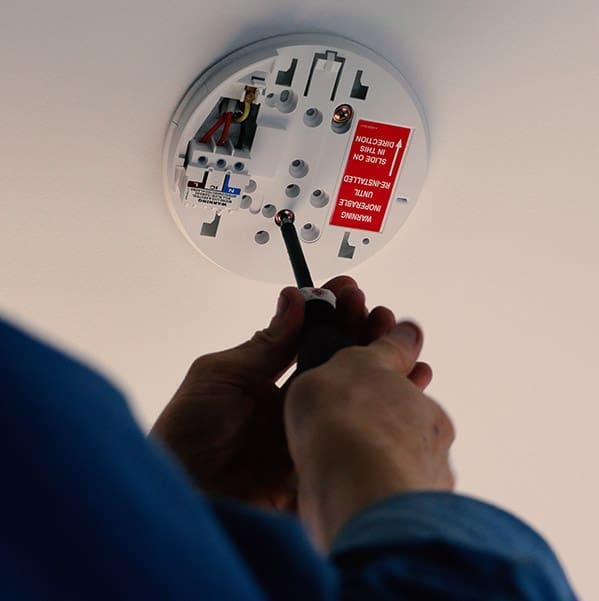Ionization smoke alarms are generally more responsive to flaming fires, but fall short when it comes to smaller, domestic fires.
These smoke detectors house small amounts of radioactive material between two electrically charged plates, which ionizes the air and causes current to flow between the plates. When smoke enters the chamber, it disrupts the flow of ions, which reduces the flow of current and activates the alarm.
As part of the recent QLD Smoke alarm legislation, Ionization Detectors are to be phased out and replaced with Photoelectric Smoke Alarms.
PHOTOELECTRIC SMOKE ALARMS
On the other hand, photoelectric smoke alarms are generally more responsive to fires that begin with a long period of smouldering (called “smouldering fires”).
These alarms work by aiming a light source into a sensing chamber at an angle away from the sensor. When smoke enters the chamber, it reflects light onto the light sensor; triggering the alarm.
Photoelectric smoke alarms can also be hard-wired into your home, and ‘inter-connected’ so all the alarms sound when one is activated.
In line with the Queensland Fire and Emergency Service’s advice, Voltora recommends working with Photoelectric smoke alarms over Ionization smoke detection alarms, because they:
- provide earlier warnings for smouldering fires; the most common occurrence in domestic properties
- provide the best rate of detection
- are less likely to malfunction or give off false alarms
- do not contain radioactive material, which can be harmful if there’s spillage.












